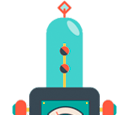Ask Singapore Homework?
Upload a photo of a Singapore homework and someone will email you the solution for free.

Question
secondary 4 | E Maths
One Answer Below
Anyone can contribute an answer, even non-tutors.

How to do (i), (ii) & (iii)?
P(first card is not '8')
= P(the card drawn is any of the other 7 cards)
= ⅞
7 cards out of 8 cards don't have '8' on them. So 7 outcomes out of total of 8 possible outcomes fit the required probability.
Using a numbered example first :
If they were asking for 5 draws needed to obtain the number '8' ,
this means the first 4 draws were not '8' and the 5th draw is the '8' (that's why you had 5 draws because you only succeeded on the 5th try)
So for the first 4 draws, probability of each non-8 draw = ⅞
(i.e you draw any of the other 7 cards)
The 5th draw is the '8' and probability for this is ⅛ (only 1 card out of 8 cards is '8')
So required probability
P(1st draw is not 8) × P(2nd draw is not 8) × P(3rd draw is not 8) × P(4th draw is not 8) × P(5th draw is 8)
= ⅞ × ⅞ × ⅞ × ⅞ × ⅛
= (⅞)⁴ × ⅛
Required probability
= ⅞ × ⅞ × ⅞ .... × ⅞ × ⅛
There are (n - 1) '⅞' in the product and only one ⅛
= (⅞)ⁿ⁻¹ × ⅛
This is also equal to :
7ⁿ⁻¹ / 8ⁿ
'At least n draws to get '8' can have these equivalent meanings :
①
'n or more draws to get '8' '
②
'no '8' for the first (n - 1) draws.
For ①, the '8' can be drawn on the nth draw or on later draws.
It includes the possibilities of getting '8' on the nth draw, (n+1)th, (n+2)th, (n+3)th, ... all the way to infinity.
So what you are adding up are all these probabilities :
Probability = (⅞)ⁿ⁻¹ (⅛) + (⅞)ⁿ (⅛) + (⅞)ⁿ+¹ (⅛) + (⅞)ⁿ+² (⅛) ... ...
For ②, once we reach (n-1) draws with no '8', the subsequent draw/draws that may get '8' have been accounted for already.
The probability is simply = (⅞)ⁿ⁻¹
Note that the probabilities for ① and ② are equal .
① forms a geometric series with a sum to infinity that is equal to ②'s probability.
Side note :
Recall from part ii) that the probability for exactly n draws is (⅞)ⁿ⁻¹ (⅛)
We see a ⅛. What is the other ⅞ ? It represents those (n+1)th, (n+2)th, (n+3)th, .... and draws that go all the way to infinity
Probability to get '8' on (n+1)th draw or later
= (⅞)ⁿ⁻¹ (⅞) = ⅞ⁿ
Add the two together , the result is still going to be (⅞)ⁿ⁻¹
See 1 Answer





